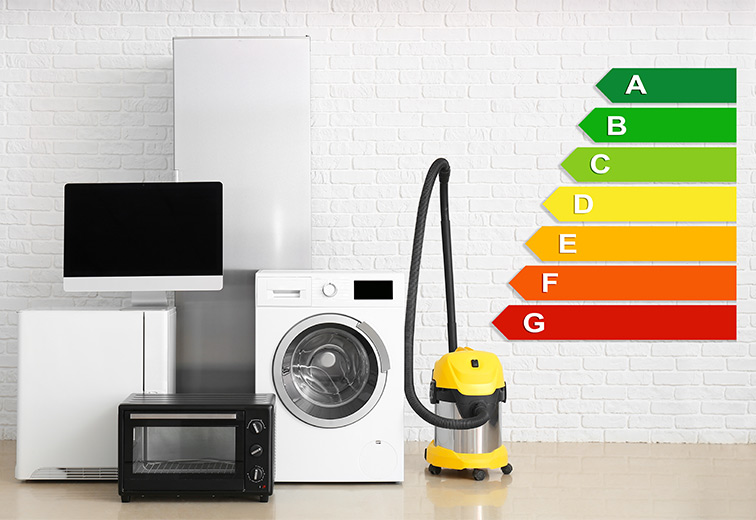Know your energy
Understand what your household electrical appliances cost to run. Get clear, room-by-room guidance with practical advice to help you use less energy and save money.
Understand what your household electrical appliances cost to run. Get clear, room-by-room guidance with practical advice to help you use less energy and save money.

When buying appliances, check the energy label. Ratings go from A (most efficient) to G (least). While energy-efficient models may cost more upfront, they can save you money over time through lower running costs.

Don't leave the fridge door open for long; it takes 45 minutes to cool down again.
Showers use 80% less energy than baths — save water and energy every time.
Unplug appliances when not in use; standby mode still consumes a considerable amount of energy.
Replace old bulbs throughout the home, with low-energy LEDs.


Energy consumption is expressed in kilowatt-hours (kWh). To calculate energy usage, you multiply the appliance’s wattage by the number of hours it’s used and divide by 1,000 to convert watts to kilowatt-hours. For example, if you use a *100-watt bulb for 1 hour, it consumes 0.1 kWh (100 watts x 1 hours ÷ 1,000 = 0.1 kWh).
To calculate a product's running cost per hour, you can multiply the given kWh by the cost of your electricity unit rate. (0.1 kwh x unit rate 0.3475c = 3 cent) 100-watt bulb for 1 hour using a unit rate of 0.3475c will cost you 3 cent.
The costs shown are based on Electric Ireland's standard 24-hour rate of €0.3475 per kWh (non-smart), including VAT as of November 2024. Final electricity bills include an annual standing charge and PSO payment. Appliance costs are estimated based on hourly continuous use. Actual costs may vary with usage patterns.
Examples of energy consumption is intended as a general guide to help you understand potential energy costs and identify which appliances may have the greatest impact on your bill. The wattage listed is an average across various brands and models.